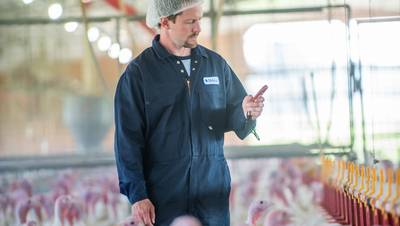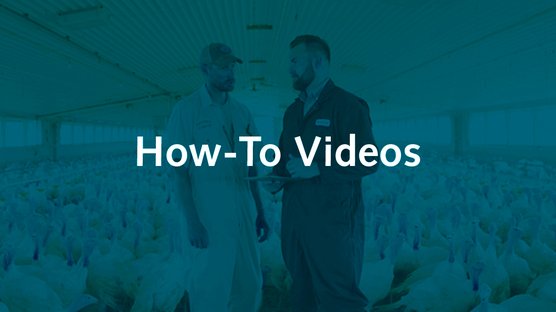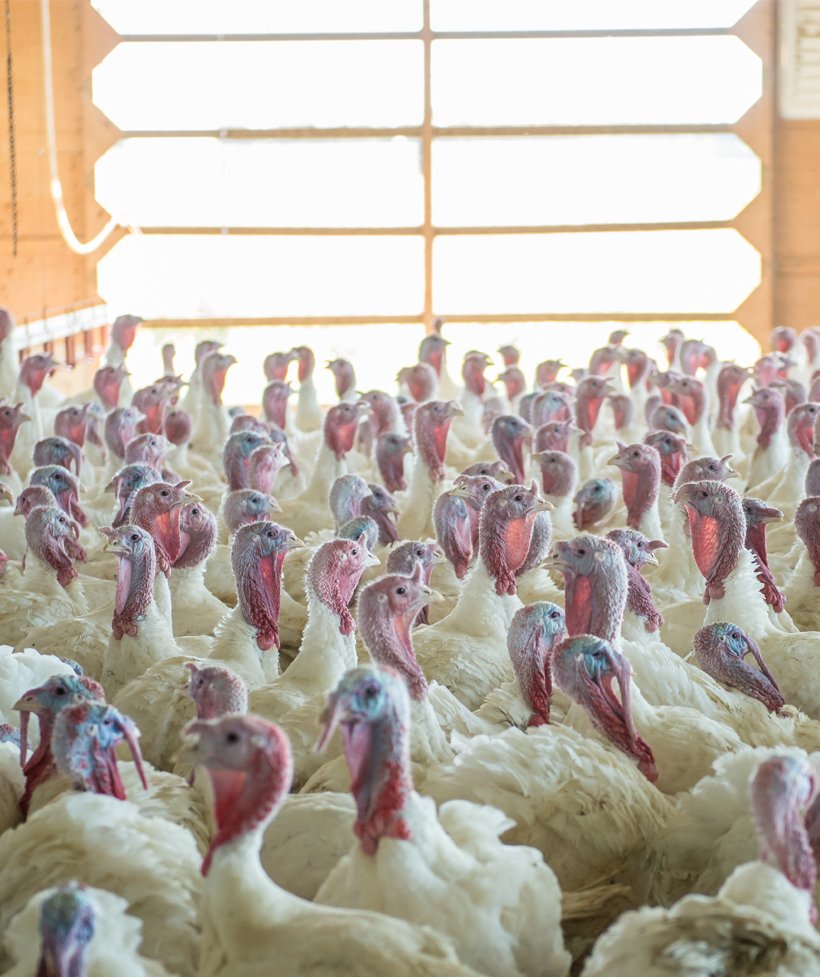
Published on Aug. 19, 2019
A guide to evaporative cooling systems in your turkey barn
It doesn’t take much to see that we are in a time of extreme weather. Only a few weeks ago, temperatures reached an all-time high all over Europe. When we are complaining of high heat and humidity, you can bet that our turkeys are certainly in need of cooling systems.
Not being able to sweat means that a turkey’s only method of cooling down is to pant or flap their wings. What are some evaporative cooling systems that can provide relief in the barn?
Effects of temperature on turkey health
As temperatures rise, turkeys become more stressed, leading to serious effects on turkey health and performance.
| Temperature | Effects |
|---|---|
| 13°C - 24°C (55°F - 75°F) | Thermal neutral zone - bird does not need to alter its basic metabolic rate to maintain its temperature |
| 24°C - 29°C (75°F - 85°F) | Slight reduction in feed consumption, feed conversion compromised - panting |
| 29°C - 32°C (85°F - 90°F) | Feed consumption falls further, weight gains lower, feed conversion further compromised - excessive panting |
| 32°C - 35°C (90°F - 95°F) | Feed consumption continues to drop, birds in survival mode |
*Information provided by North Carolina State University
Temperature and humidity go hand in hand
Systems such as cool cells and foggers can be very effective, but you should be aware that they will add humidity into the air. If the humidity is too high, birds will pant and experience stress as they try to cool down. The drier the air at the time of using the evaporative cooling, the more evaporation can occur, and the greater the cooling effect.
Temperature and humidity are closely connected. The 80-80 rule helps us understand when humidity will be highest. When the temperature is above 27°C (80°F), the Rh is almost always below 80%. A simple rule of thumb is that you should not use evaporative cooling when the Rh (relative humidity) is >80%. Evaporative cooling can be used when outside air is more than 87°F (31°C) and humidity is less than 75%. The graph below shows how humidity (represented by the blue line) changes as the temperature (represented by the red line) rises.
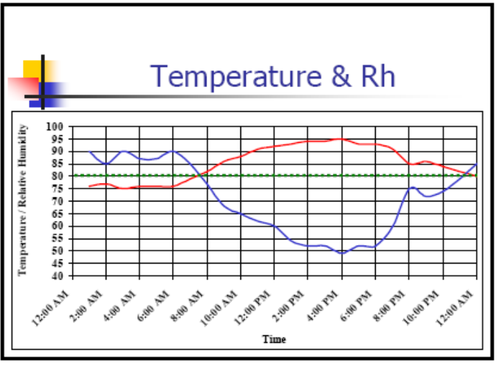
*Graph provided by North Carolina State University
Evaporative systems alone cannot reduce bird stress. They must be combined with a high level of air speed provided by tunnel ventilation. An air speed of 600 ft/min can provide up to 15°F of wind chill. Below is an illustration of how wind chill can improve the feel of the air.
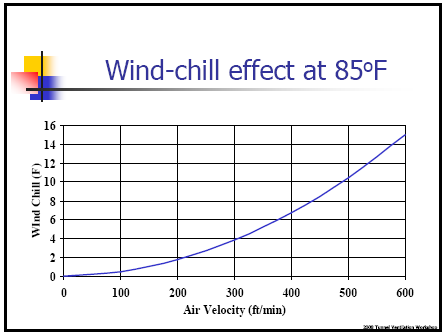
*Graph provided by North Carolina State University
Cool cells and foggers are two evaporative systems that provide cooling relief. What is the difference between the two, and which system is most effective for your region?
Cool cells
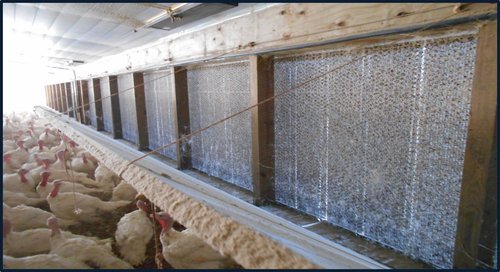
Cool cells run in combination with tunnel fans. Water evaporates from the wet cool cell pads, placed along the side of the barn. Cell cells can produce up to 11°C (20°F) of cooling. If you are in a region that regularly reaches high temperatures in the summer, cool cells will be worth the investment to keep your birds comfortable.
Using imperial measures, the example below is a situation where the temperature in the barn is 105°F. The air speed of the fans provide 15°F of wind chill cooling. In combination with the cool cells, which provide 20°F of cooling, you can see how 105°F has been cooled to 70°F, which puts the barn in the correct comfort zone.

Foggers
Fogger systems produces water droplets smaller than a misting or sprinkler system. They are typically less expensive than a cool cell system and can be retrofitted into an older barn. Foggers can produce up to 12°F of cooling. If you are in a region that reaches high temperatures less frequently, foggers can be effective at keeping your birds comfortable.
In a similar example as the one above, with the air speed providing 15°F of cooling and foggers providing 12°F of cooling, 95°F is modified to 68°F.
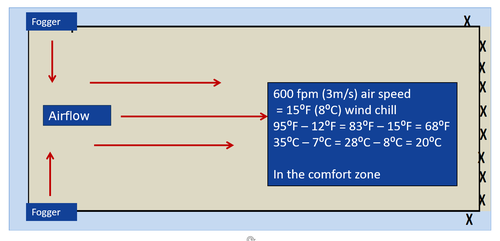
No matter what system you use to cool down your birds, the biggest takeaway is to keep track of temperature, wind chill, and humidity before turning on your system. You want to make sure that you are providing comfort for the turkeys rather than added humidity.
For more information on keeping your birds comfortable during hot weather, check out our webinar on heat stress management or contact our technical team.

